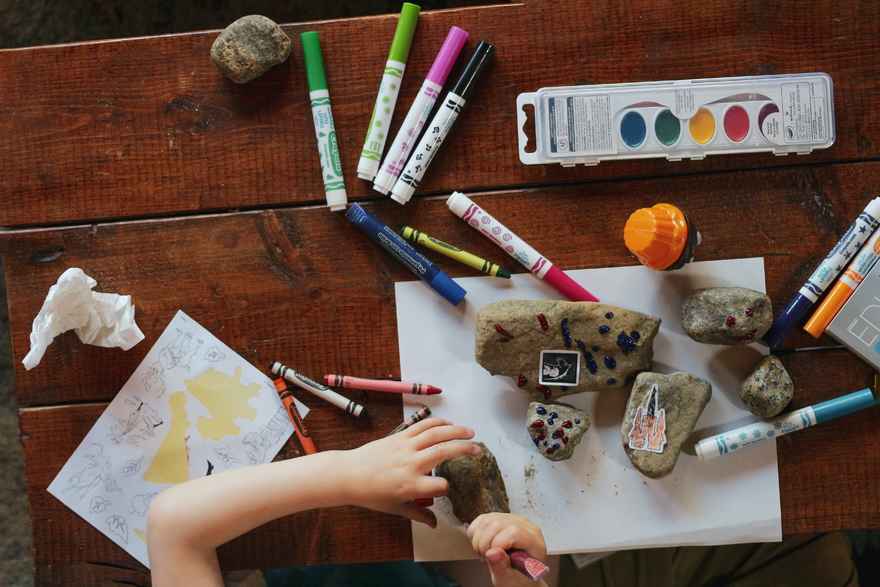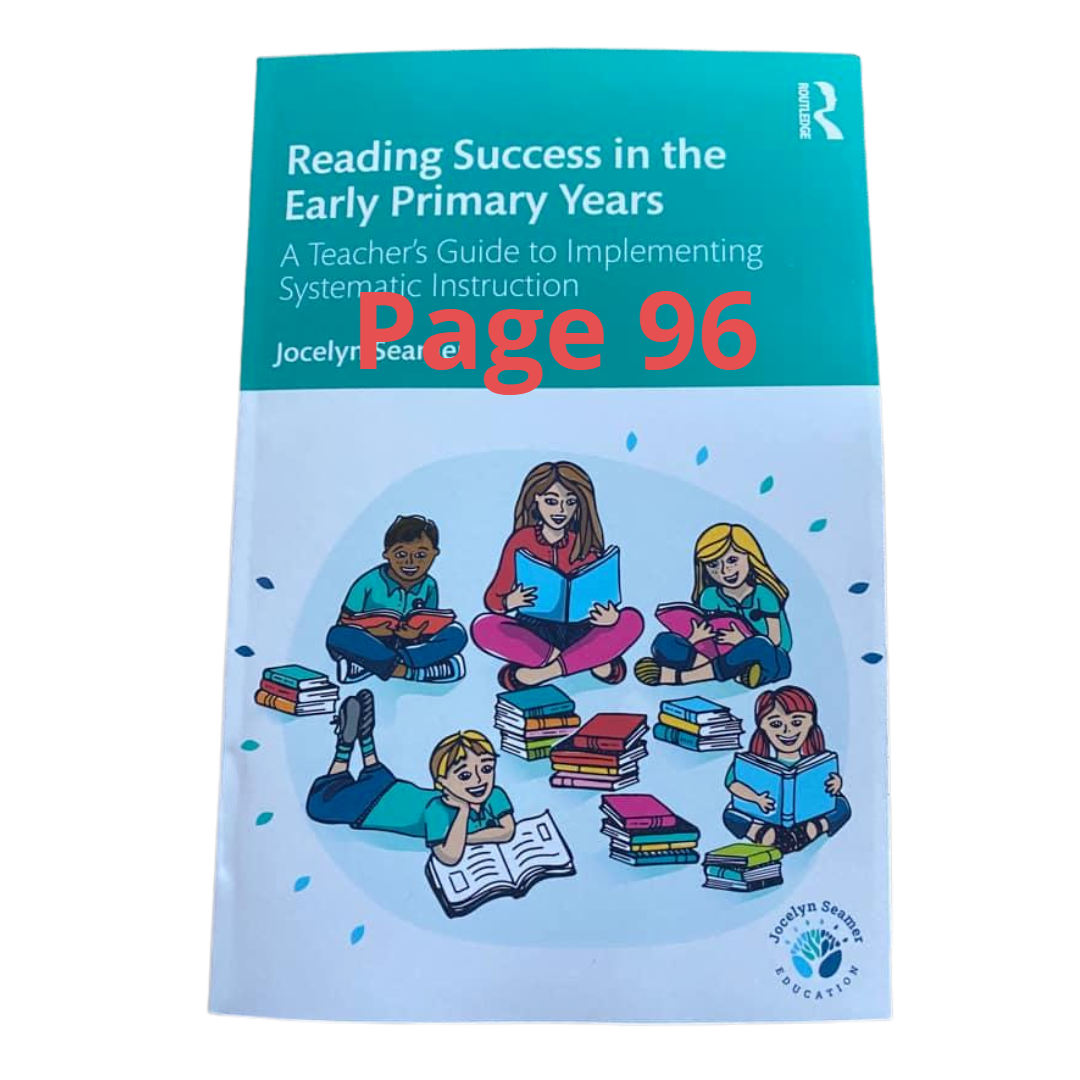S1 E11 - What Play Can and Cannot Do for our Early Years Students

The first thing I want to say is that I'm a strong advocate for explicit teaching in early literacy skills. And if you know me, that will come as no shock to you at all. I write about and I teach others about teacher-led systematic instruction and literacy. There is ample research evidence showing that full guidance instruction is much more effective than partial guidance for everyone but experts, and that comes from an article by Clark from 2012.
Now, this is particularly true for skills and knowledge that are biologically secondary, so let's unpack that a little. Some skills are biologically primary. We are hardwired to learn them. Others, such as learning to read and write, are not natural. We won't come to them without explicit teaching and somebody there to help walk us through the process of acquiring the knowledge and skills required. So, Children need adults to lead them. They need adults to direct their attention to closely monitor progress and to adjust instruction to their needs.
The Australian inquiry on reading instruction made several key recommendations when it comes to early reading instruction, and that included an early and systematic emphasis on the explicit teaching of phonics and a focus on direct teaching. It also recommended a rich print environment be developed. So we are not saying let's get rid of rich text. We're not saying let's get rid of play. We're not saying let's get rid of those lovely early childhood experiences that help us build our language skills. What we're saying is that direct teacher-led instruction is required for children to learn to read and write.
Now, while I'm an advocate for explicit teaching, I don't believe that this has to come at the expense of lovely experiences that are important for young children. We have to keep access to painting, craft, drawing and music in our classrooms. Children need to be able to be children. They should be able to listen to rich stories, and in fact, this is found to be supported by the evidence they need to be able to talk with each other in play.
One of my favourite things to create for children is opportunities for dramatic play. I can't tell you how many hairdressers and doctor surgeries and schools and science scientists, labs, and all sorts of things I've created in my own classrooms so that children can assume the role of the characters in that play and talk with others. I believe that children need to have some choice about what they do in the day and that we need to help them build the social and emotional skills that will carry them through the rest of their lives.
Play is really important, and so I think that there is a way that we can (and I'm about to use a word we're not supposed to use) find a balance between these things. But explicit teaching does, however, mean that we are very clear about the role of context-embedded opportunities to explore print in ways that work for children and the role of explicit teaching.
It's so important that we understand that it doesn't matter how many times you put the target graphemes you are teaching into the provocations for play opportunities. It doesn't matter how many times a student is the focus child in your investigation time, and you lead them to discover things that start with /s/. Play-based learning will not teach children to read and write. It will enable them to have opportunities to explore print and language in ways that work for them, but it does not replace those teacher-led explicit lessons.
Considering the strong evidence for teacher-led instruction in literacy and our recognition of the fact that our curriculum is very full, exactly how do we strike that right balance for students between explicit systematic teaching and giving them the opportunities for developmentally appropriate learning? I've got four ideas on this, and I'll share them with you now.
No. 1 - Link play to learning.
The first one is about making play meaningful and linked to learning. So play-based learning is not about putting out some toys and then letting the kids go for it, and the teacher sits at their desk and does whatever administrative work they need to do. That's not high-quality play-based work, and I don't think anyone would say that it is. When we look to implement some play opportunities, there is no random. We have to be intentional, and every experience is chosen for the way it contributes to the academic and social and emotional goals of children.
No. 2 - Adjust the timing.
The second idea I have for you on how to strike this balance is to adjust the timing. Schools that are rigorously play-based and stick very tightly to that will often require that the first hour, at least, of the school day, is dedicated to play-based learning. And I think that at the start of the Foundation year, that's entirely reasonable. It lets you get to know the students, they get to have that nice transition into the world of a more academically focused environment. But I don't think that the play base should stay at that key time for the whole year. In fact, I think that it should be shifting out of that key learning time entirely by the second term, at the very latest, if not within the first few weeks of the school year, it also means that we probably won't be doing this every day. That does have implications for how much time we spend organizing this thing and who uses it.
No. 3 - Apply the four pillars of learning.
I think we also want to be clear about what instruction looks like in our classrooms. So many of the early childhood activities that we give children are nothing more than time fillers. This often occurs in rotations, and kids have activities that they do themselves without adult supervision. So teachers spend inordinate amounts of time laminating and creating and making all these fun opportunities in the name of some sort of play-based approach, and we think that that's going to lead to learning. Well, Stanislas Dehaene and many others who work in explicit instruction show us, no, that's actually not the case.
Dehaene has four pillars of learning. The first one is we have to direct students attention. They don't know how to do that for themselves until they're much older, up until the late teenage years. So in order for strong learning to occur, an adult needs to be directing attention.
The second one is active engagement. Children need to be actively building mental models of the thing that we want to help them learn about. The third one is error correction. If children are working on their own, where's the error correction occurring? It's not in most cases. The final pillar is around consolidation, and that needs to be very targeted and teacher-led as well.
No. 4 - Learning trays (tub time).
My fourth idea is a borrowing. Now, when my children were young, we lived in a town that had a Montessori-inspired early learning centre, and they went there. I watched in amazement as these little people from two years old worked with these learning trays and they were all set up, and the children would take a tray to the table independently, and they would complete an activity (obviously non-academic), and when they were finished with it, they put it back, and they chose another one. And I thought, wow, look at the self-regulation that's being developed for these little people. This is amazing.
So if you are looking for an alternative to that usual group rotation, this idea of what I now call tub time could be an option for you, particularly in the foundation year. While whole class teaching is obviously the goal, there does come a time for most of us where we just need the kids to be doing something so that we can work with a small group in some way, and that's unfortunate, but it's the reality. It may just be you and 24 kids who are all up to different points in their learning. When we need students to have something to do independently, tub time could be an answer. So these are single-student opportunities for children to choose their own activity and work in their own space for a period of time.
If you have a copy of my book Reading Success in the Early Primary Years, look up tub time on page 96, and you'll see an explanation there of how other teachers have used it.
But even into the older grades, this idea can be something that is really useful for classrooms where you have a lot of behavioural challenges. Often the behavioural challenges come about because we're asking kids to do things that they actually don't have the personal skills to manage. And so giving them the opportunity for, you know, 10 minutes, 15 minutes of non-academic something or other can really help settle after recess.
Getting the balance right between play and explicit teaching in the early years is not about finding this magical ratio of play to explicit but providing a range and balance of experiences. Play is important for early years development. It helps to build social skills and students learn about collaborating with others. Students learn to regulate themselves on their own without an adult guiding them. These are all positive impacts. It's great for well-being, and it gives a brain break, but play-based experiences will not provide students with the necessary skills and knowledge to learn to become strong readers And yes, I'm sure that we could point out one or two students in our careers for whom that has been enough, but that is not going to be enough for all of our students, and that's who we are teaching.
So play's good, explicit teaching is good, know what your students are getting out of the experiences and make sure that you have a good range and balance that meet students, social, emotional, developmental, and academic needs.
Links from this episode
- Putting Students on the Path to Learning: The Case for Fully Guided Instruction, Clark 2012
- The Australian inquiry on reading instruction
- Stanislas Dehaene’s four pillars
- Reading Success in the Early Primary Years
Looking to learn more about tub time, setting your early year's classroom up for success and teach reading and writing effectively? You'll find the Reading Success in the Early Primary Year's course and many others in the Evergreen Teacher professional learning membership.

 Jocelyn Seamer Education
Jocelyn Seamer Education

2 comments
Jocelyn Seamer Education offers fantastic literacy resources and teaching strategies. A great platform for educators to enhance reading instruction effectively.
Great insights on the role of play in learning! A must-read for educators seeking a balanced approach to early education.
Leave a comment